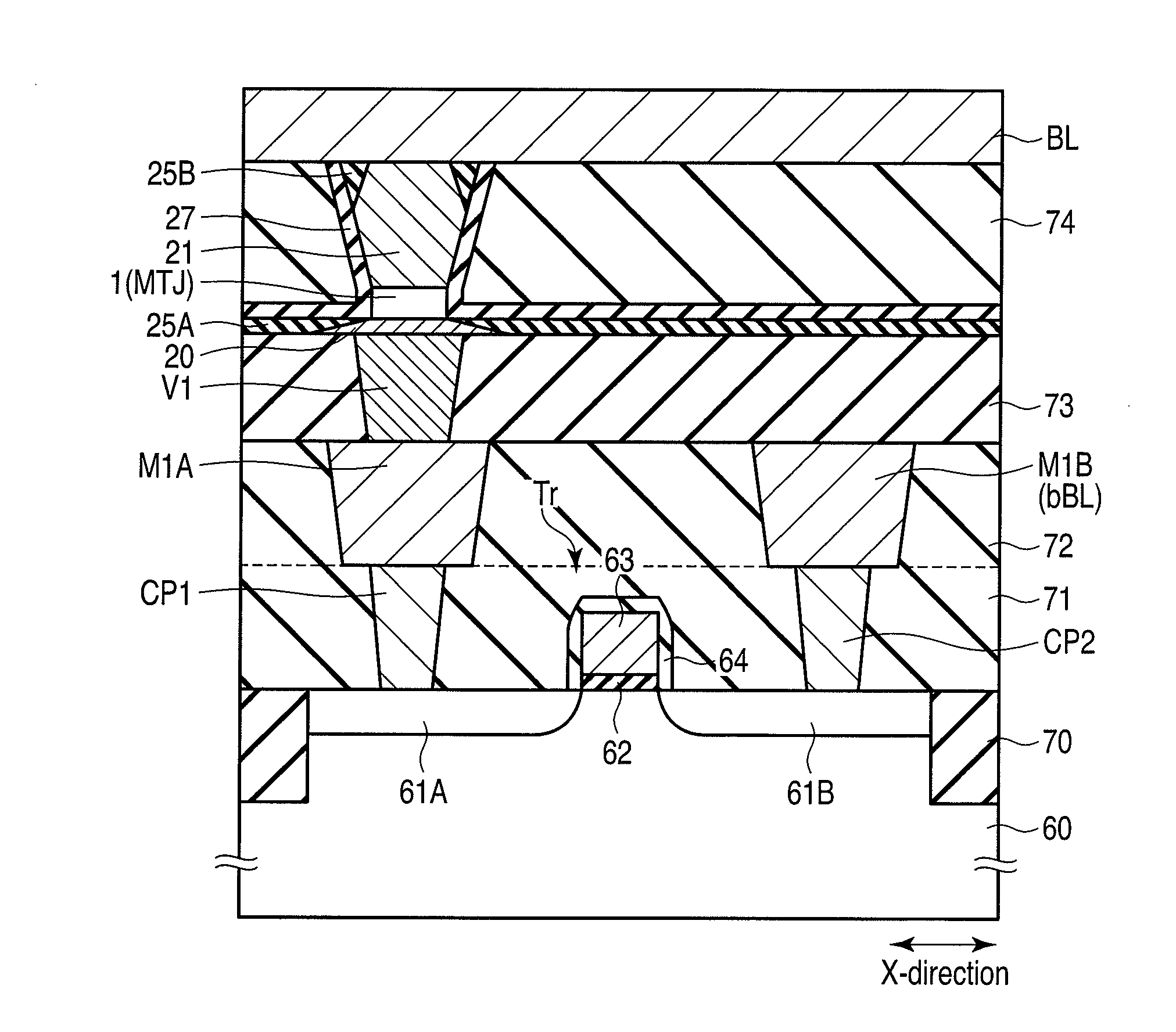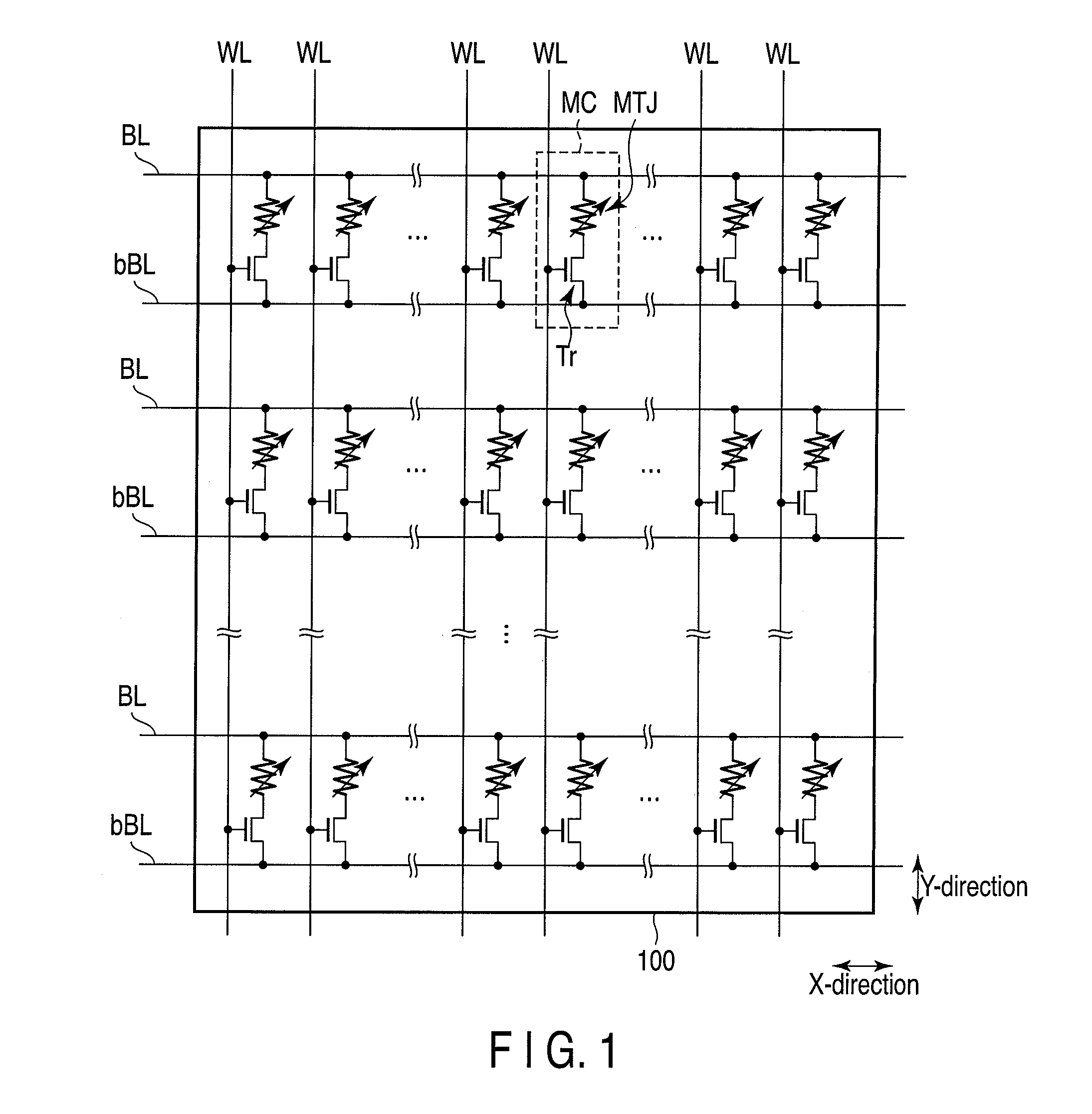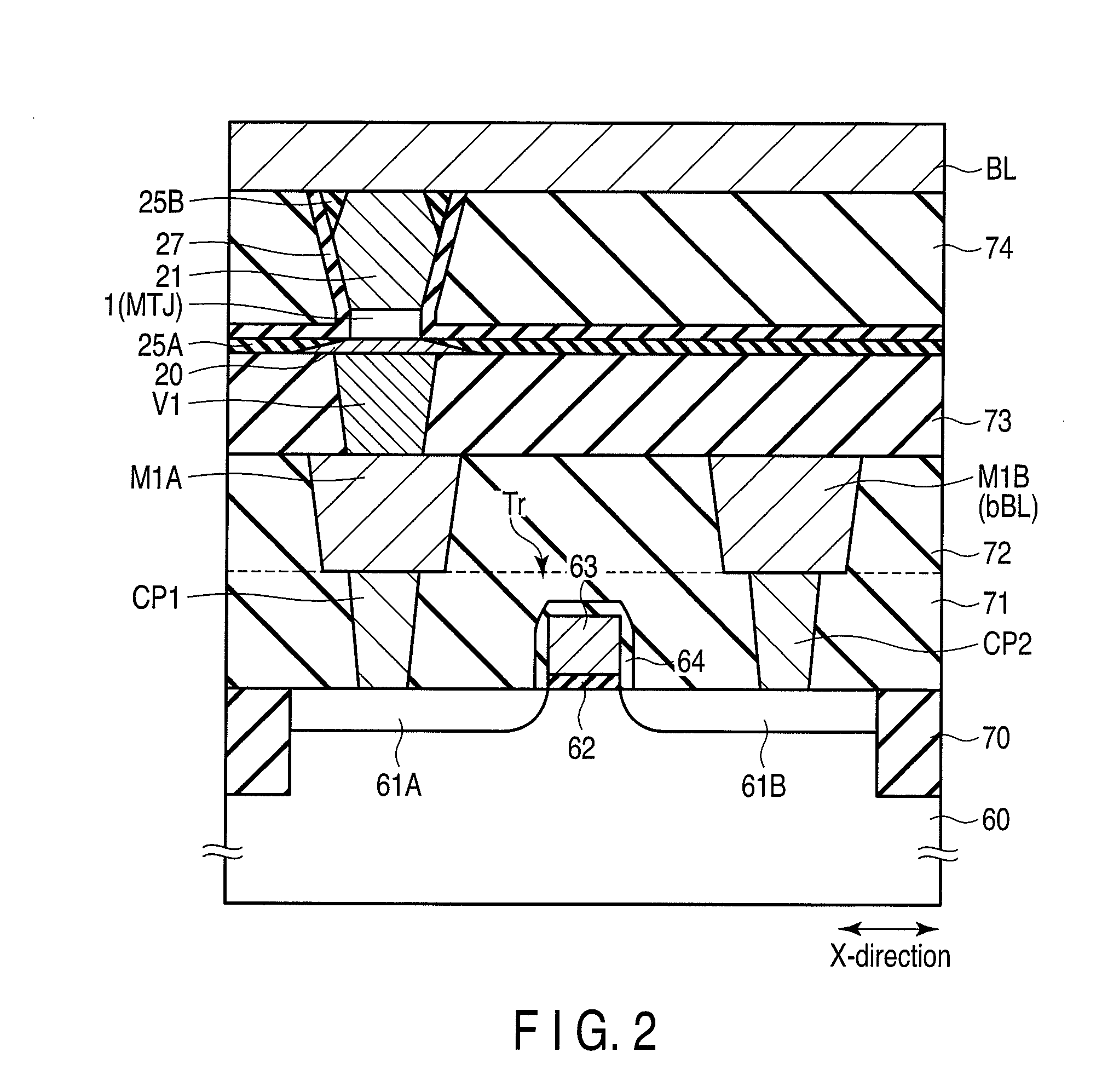Magnetoresistive element and method of manufacturing the same
a technology of magnetoresistive elements and magnetoresistive elements, which is applied in the manufacture of inductance/transformer/magnets, magnetic bodies, solid-state devices, etc., can solve the problems of failure of the magnetoresistive element and the mram, the failure of the magnetoresistive element and the use of the mram, and the difficulty of both achieving the miniaturization of the memory cell toward an increase in capacity
- Summary
- Abstract
- Description
- Claims
- Application Information
AI Technical Summary
Benefits of technology
Problems solved by technology
Method used
Image
Examples
first embodiment
1. First Embodiment
[0036]Referring to FIGS. 1 to 13, a first embodiment of the invention is described below.
[0037](1) Structure
[0038]Referring to FIGS. 1 to 4, a structure of a magnetoresistive element according to the first embodiment of the invention is described.
[0039]FIG. 1 shows an equivalent circuit of a memory cell array of a magnetic random access memory (MRAM).
[0040]In a memory cell array 100, a plurality of bit lines BL and bBL extending in the X-direction and a plurality of word lines WL extending in the Y line are provided. Connected to one memory cell MC are one word line WL and two bit lines BL and bBL. The two bit lines BL and bBL form a pair of bit lines.
[0041]In the memory cell array 100, a plurality of memory cells MC are arranged in an array configuration. The plurality of memory cells MC arranged along the X-direction are commonly connected to a pair of bit lines BL and bBL. The plurality of memory cells MC arranged along the Y-direction are commonly connected to...
second embodiment
2. Second Embodiment
[0144]Referring to FIGS. 14 to 19, a second embodiment of the invention is described below. Note that, in the second embodiment, components identical or equivalent to those described in the first embodiment are indicated by the same reference characters, and their detailed descriptions are given as necessary.
[0145](1) Structure
[0146]Referring to FIG. 14, a structure of a magnetoresistive element according to the second embodiment of the invention is described.
[0147]FIG. 14 shows a structure of a magnetoresistive element according to this embodiment. Configurations of a memory cell and a memory cell array in which the magnetoresistive element is used are the same as those shown in FIGS. 1 and 2, and therefore their descriptions are omitted here.
[0148]As shown in FIG. 14, in the magnetoresistive element 1 of this embodiment, the structure of the upper electrode 21Y differs from that of a magnetoresistive element of the first embodiment.
[0149]In this embodiment, the...
third embodiment
3. Third Embodiment
[0169]Referring to FIG. 20, a structure of a magnetoresistive element according to a third embodiment of the invention is described. Note that, in the third embodiment, components identical or equivalent to those described in the first embodiment are indicated by the same reference characters, and their detailed descriptions are given as necessary.
[0170]In the first and second embodiments, the structure of the magnetoresistive element 1 is a three-layer structure in which three films are laminated. However, the structure of the magnetoresistive element is not limited to the three-layer structure and may be a laminated structure including four or more layers.
[0171]As shown in FIG. 20, a magnetoresistive element 10 may have a double-junction structure. The magnetoresistive element 10 of the double-junction structure comprises a ferromagnetic layer of a first magnetic pinned layer 11X, a first tunnel barrier layer 12X, a ferromagnetic layer of the magnetic free layer...
PUM
 Login to View More
Login to View More Abstract
Description
Claims
Application Information
 Login to View More
Login to View More - R&D
- Intellectual Property
- Life Sciences
- Materials
- Tech Scout
- Unparalleled Data Quality
- Higher Quality Content
- 60% Fewer Hallucinations
Browse by: Latest US Patents, China's latest patents, Technical Efficacy Thesaurus, Application Domain, Technology Topic, Popular Technical Reports.
© 2025 PatSnap. All rights reserved.Legal|Privacy policy|Modern Slavery Act Transparency Statement|Sitemap|About US| Contact US: help@patsnap.com



